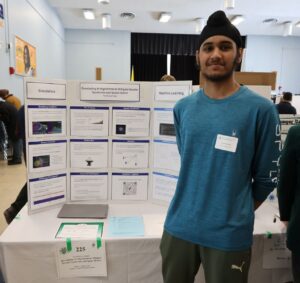Getting Started
Check out these important resources before you start:
TVSEF Project Guide
Logbook Tips TVSEF
My STEM Space
REGISTER HERE!
FIND AN IDEA
What interests you?
It could be any area – biology, chemistry, physics, engineering, computing, astronomy, psychology, math.
What are you passionate about?
What makes you excited?
Check out these resources if you need help finding an idea.
Experiments found online can be interesting, but should only be used as a starting point for new questions.
PAUSE AND THINK
Does your topic require you to work with HUMANS or ANIMALS? If so, you must get approval from the Ethics Committee.
See the TVSEF Project Guide for instructions and forms that must be completed.
DO SOME RESEARCH
Record ALL references as you use them.
A log book is encouraged, especially for Intermediate and Senior students (see Logbook Tips TVSEF).
Brainstorm possible questions you can investigate.
SELECT A QUESTION
State your hypothesis.
Give reasons for your hypothesis from your research.
CARRY OUT YOUR INVESTIGATION
This can be an experiment, an innovation or a study.
Each experiment should have at least three trials.
Innovations will require several testings which may result in more iterations.
Negative results are just as powerful as positive results and should be presented.
Record any new questions or next steps you might have, which may lead to more investigation or experimentation.
PREPARE YOUR EXHIBIT
Use a tri-fold board to present your work.
Common headings are: Background, Hypothesis, Method, Results, Analysis, Conclusion, Future Work, Acknowledgements and References.
You can also use: Why? How? What? So What? What’s Next? Thanks and References.
Your exhibit can also include props, display material, prototypes. Be sure to follow the Rules for Exhibits.
Check out Mike Morrison’s Better Tri-Fold Poster video to help you create an effective display.
Don’t forget to REGISTER for the fair!
QUESTIONS? Contact us!

